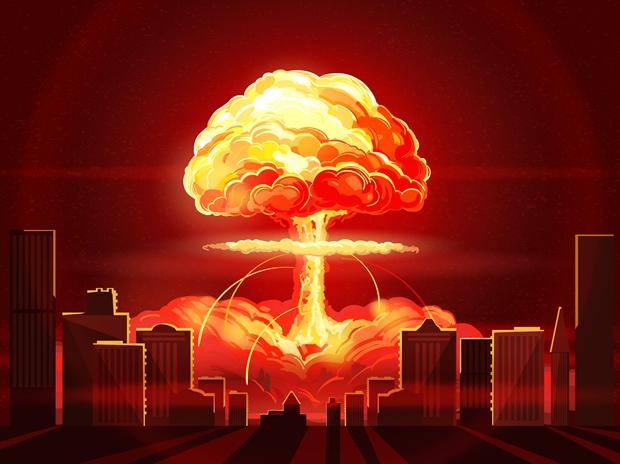
SOURCE: Business Standard
Former president Dr A P J Abdul Kalam was once asked: “Can science create a ‘Cool Bomb’ to defuse or deactivate the deadly atom bomb?” Years later, India now seems to be taking the first steps in that direction, with a new research indicating that dust particles could help minimise the damage caused by a nuclear blast.
Ever since the US dropped atom bombs on Japan’s Hiroshima and Nagasaki, killing hundreds of thousands to end the World War-II, physicists the world over have been exploring ways to reduce the impact of nuclear bombs. An Indian mathematician seems to have taken a leap in this direction.
Dr Meera Chadha of the Netaji Subhas Institute of Technology in New Delhi has found that the deadly effects of a nuclear blast can be partially mitigated or reduced with the help of dust particles. This mathematical model, first published in The Royal Society Publishing in June and in the Journal of the Physical Society of Japan in August this year, has deduced that the energy released and the damage radius of a nuclear blast decreases with time as dust parameters in the system increase.
The research was an attempt to approximate the reduction in the damage radius and the peak pressure in the nuclear blast waves with the addition of dust particles. Researchers found that high temperatures in the vicinity of the blast heat up dust particles, and a part of the energy of the gas is consumed in the process, resulting in a lowering of temperature and pressure of the gas. So, “the addition of dust results in decreasing the mixture’s compressibility and increases the mixture’s inertia which ultimately causes the reduction in the blast radius and peak pressures,” the paper published in the Journal of The Physical Society of Japan stated.
Speaking to Business Standard, Dr Meera Chadha said: “Although small, mitigation of nuclear explosion is possible with dust particles. However, a detailed laboratory experiment conducted in a controlled environment can help validate our claims.” The research, funded by the Ministry of Science and Technology, is being viewed as groundbreaking, as these are the first step towards mitigating the colossal disaster a nuclear blast might cause. “Estimation of the reduction of damage radius is the first step in that direction. The second step would be a physical lab test to validate and finetune the results of this mathematical model,” she added.
The mathematical model, developed in a lab, is yet to be fully tested experimentally. The team is in the process of preparing a proposal to test it on a larger scale. “Lab test is the next step. In the short term, these tests could be performed in any institution where such a facility is available. However, in the medium and long terms, a mathematical research centre needs to come up for both theoretical modelling and its experimental validation. For this, a formal proposal is being prepared,” Dr Chadha said.
With the nuclear weaponry proliferating across the world, several countries are now flexing their geostrategy. India and Pakistan, both nuclear powers, had come on the brink of an all-out war following the deadly Pulwama attack in February 2019. A development in ways to reduce the impact of an atom bomb could prove game-changing in shaping the country’s geopolitical strategy. “This is only a first step in that direction. An enormous amount of work needs to be done to actually reach the stage of a full-fledged ‘Cool Bomb’ which will definitely have many more material and substances in addition to dust,” the mathematician said.
With the research still in its nascent stage, a lot needs to be done before it can be practically tested. One of the major requirements is the creation of a mathematical research center-cum-testing lab, where the model can be tested in a real environment. Apart from it, a major hurdle is the development’s inclusion in the “policy for strategic planning for the defence of the country”.
A ‘cool bomb’ can act as a deterrent to nuclear warfare as it can be concurrently used in two forms. Dr Chadha elaborated that such material could first be placed around high value and strategic targets. And then these cool bombs could be launched at anticipated points of impact of incoming attacks to minimise the blast range.






